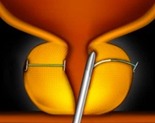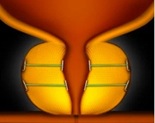What is UroLift?
The Urolioft procedure is an effective treatment of benign prostatic hyperplasia (BPH) or enlarged prostate.
UroLift offers fast relief of symptoms and a significant improvement in the quality of life.
What are the Advantages of the UroLift Procedure?
The key advantages of UroLift procedure in the treatment of BPH are:
- UroLift is suitable for most BPH patients, with few contraindications
- There is no cutting, heating or removal of prostate tissue.
- The UroLift procedure has no impact on your sexual function, and
- Typically the UroLift procedure is performed in a day surgery within a couple of hours.
Alternative treatments for BPH do not offer similar benefits.
Who Can Benefit From Urolift?
Good candidates are:
- Male over 45 years of age
- Have symptoms relating to BPH, and
- Who are not allergic to nickel, titanium or stainless steel.
UroLift Treatment for Benign Prostatic Hyperplasia
The UroLift approach to treating enlarged prostate (BPH) simply that lifts and holds the enlarged prostate tissue so it no longer blocks the urethra.
The procedure is a minimally invasive and is typically performed using local anesthesia in a day surgery. You should plan up to two hours for the UroLift procedure.
Patients typically return home the same day without a catheter.
- Enlarged Prostate slows or blocks urine flow

- First, the UroLift delivery device is placed into the urethra

- Then, small implants are used to hold the urethra open

- The device is removed leaving the permanent implants in place

Pre UroLift Assessment
Your urologist will
- Take your medical history to assess your symptoms and suitability
- Perform a physical examination, and
- Perform some preoperative tests
Preoperative Tests may include:
- Digital rectal exam (DRE)
- Transrectal ultrasonography (TRUS)
- Bladder ultrasound, and
- Urinalysis
During the UroLift Procedure
The actual UroLift procedure usually takes less than an hour. Your surgeon will determine whether it is performed under local or general anesthesia.
Medication to feel more comfortable may also be used to help manage the procedure.
Stages of Recovery After UroLift Procedure
Typically, no catheter and no overnight stay is required post-treatment. Patients typically go home the same day.
There is minimal downtime post-treatment and many patients experience symptom relief in as early as 2 weeks.
Patients may experience some urinary discomfort during the recovery period.
What Should You Expect After UroLift?
As with any medical procedure, individual results may vary.
Speak with your urologist to see if the UroLift System treatment is right for you. Most common side effects are mild to moderate and include pain or burning with urination, blood in the urine, pelvic pain, urgent need to urinate and/or the inability to control the urge. Most of these side effects resolve within two to four weeks after the procedure.
Risks and Side Effects After a UroLift Procedure
The most common side effects can include:
- blood in the urine
- some pain or discomfort when urinating
- some increased urge to go and
- discomfort in the pelvis
While not normal, these post-operative issues typically resolve within two to four weeks after the procedure.
What if BPH Is Left Untreated?
If left untreated, BPH can lead to the bladder not empty completely, this raises the risk of developing urinary tract infections (UTIs).
Other problems can also develop over time, including:
- permanent bladder damage
- bladder stones
- blood in the urine
- incontinence, or
- urinary retention
Alternative Treatments Options To UroLift
Alternative treatments for BRP include:
- Watchful Waiting
- Medications for BPH Treatment
- Water vapour or Rezum Thermotherapy
- Laser Therapy
- Embolization of Prostate Arteries
- Trans Urethral Resection Of The Prostate - TURP
- Trans Urethral Incision Of The Prostate - TUIP
- Trans Urethral microwave therapy - TUMT
- Radical Prostatectomy




